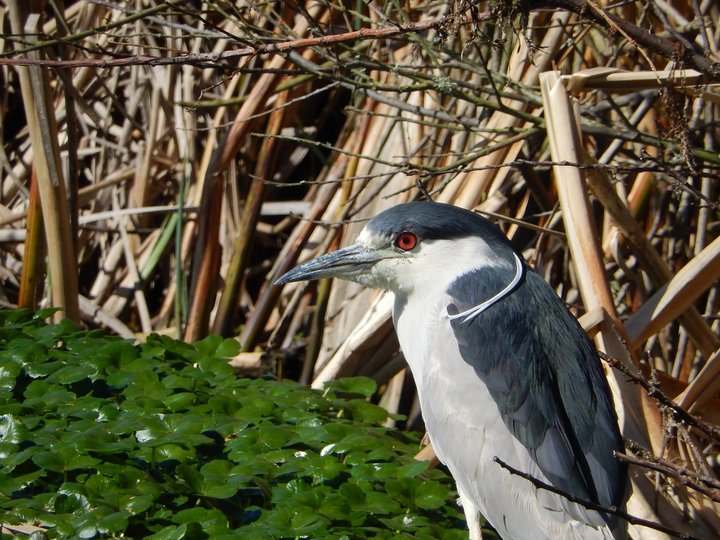
This heron thanks you for your consideration. It’s a heron, right? Photo: City of Arcata.
###
Press release from the City of Arcata:
The City of Arcata would like to remind the community that early bird nesting season begins on Saturday, February 1.
Humboldt Bay and its surrounding areas are home to a wide variety of bird species, so it is especially important that all community members check for active nests before trimming or removing vegetation during nesting season.
The federal Migratory Bird Treaty Act makes it illegal to pursue, hunt, capture, kill or transport any migratory bird or the parts, nests or eggs of such a bird except under the terms of a valid federal permit.
Contractors are advised to have a qualified biologist conduct nesting bird surveys prior to beginning any project that requires vegetation removal, and the Environmental Services Department has some helpful guidelines for all members of the community to follow:
- Early bird nesting season lasts from Saturday, February 1 to Wednesday, April 15. At this time, hummingbirds and birds of prey including hawks, owls, kites, eagles, vultures and falcons begin to nest. Major disturbances to vegetation, especially trees, should be avoided unless there is a thorough check for these nesting birds prior to beginning work. Weeding and mowing lawns are acceptable activities during this time.
- Primary nesting season for most birds will take place Wednesday, April 15 until Monday, August 31. Disturbances to vegetation should be avoided during this time unless a thorough check for nesting birds is completed prior to beginning work. Weeding and mowing lawns are still acceptable activities during this time.
- Tuesday, September 1 through Sunday, January 31, 2021, is the best time to plan for tree removal, invasive plant species management, mowing and brush clearing. Please note that a tree removal permit may be required for trees of 16 inches or more in diameter at chest height.
- To detect bird nests, watch bird behavior. If a bird is carrying nest material or food to the same place in a patch of vegetation more than once, there is likely a nest in the area. Also, look for concentrations of white droppings on the ground, then check the trees or vegetation above the droppings for a nest. Actual nest structures are typically well-concealed and may not be seen if they are located in dense vegetation.
- If a bird is observed repeatedly visiting a nest or suspected nest site, building or sitting on a nest, it is considered “active” with eggs or nestlings. If an active nest is found prior to work, avoid work in the area until the young have fledged. A 50-foot no-work buffer should be applied for song birds and a 500-foot no-work buffer should be applied for raptors.
For more information on vegetation management, bird safety and construction guidelines, click here or call the Environmental Services Department at 707-822-8184.
CLICK TO MANAGE